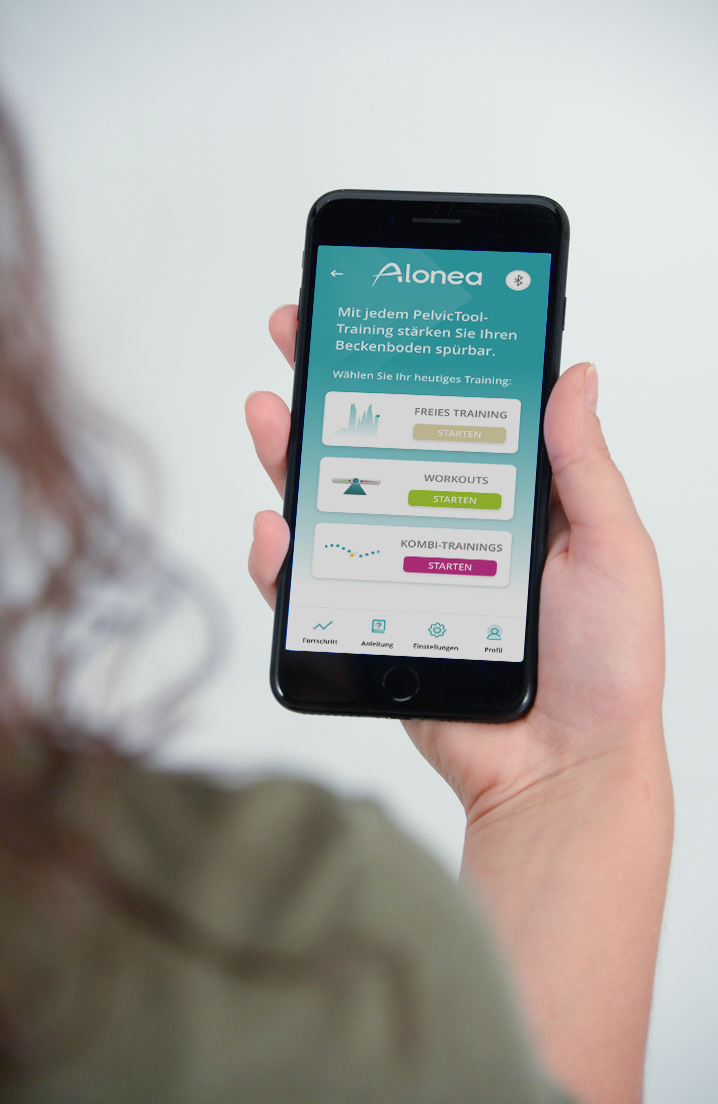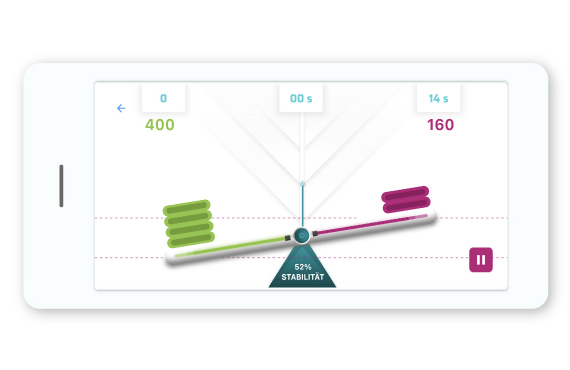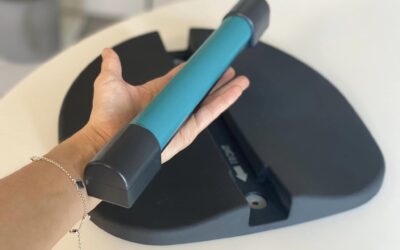Pregnancy and birth: the biggest challenges for your pelvic floor
Strengthen pelvic floor muscles, monitor training progress via app: PelvicTool pelvic floor trainer
The pelvic floor is the support network for the internal organs in the abdominal cavity.
The pelvic floor consists of three superimposed layers of muscles that are connected by connective tissue. This muscular network forms the floor of the torso and closes the abdominal cavity downwards. It holds the organs and secures them in place. The pelvic floor must therefore be stable and elastic at the same time.
During pregnancy, the pelvic floor also bears the weight of the child and the increasingly heavy uterus and is therefore exposed to enormous challenges. The baby presses on the bladder, and the muscles also become looser and softer due to hormones.
How can the pelvic floor be supported during pregnancy?
With pelvic floor training, the pelvic floor muscles can be gently trained and strengthened. A simple method of pelvic floor training can be biofeedback training using an app. The great advantage of this is that the reactions of the pelvic floor muscle to the exercises are precisely measured and graphically displayed – without intimate contact. The training can be done fully clothed.
“After the birth of my third child, I began to feel a slight weakness in my abdomen. Thanks to regular training with the PelvicTool as a supplement to my sports routine, all my worries about the pelvic floor are completely forgotten.”
What happens to the pelvic floor during childbirth?
During pregnancy, the pelvic floor must primarily hold and close. At birth, the exact opposite is demanded of him: he must open himself as never before to let the child through. To do this, the pelvic floor muscles must relax and expand to up to two and a half times their original size. Women who have experience with pelvic floor training can target and release the pelvic floor muscles more easily.
In addition, trained pelvic floor muscles are also more elastic pelvic floor muscles.
If the pelvic floor is not elastic enough, this can lead to birth injuries to muscles, tendons and ligaments. This can lead to pain and poor pelvic floor function.
Helps you become aware of, control and strengthen your pelvic floor: PelvicTool

Simple and effective pelvic floor training.
How to restore the function of the pelvic floor after birth?
For most women, with time and proper training, the pelvic floor can recover from the strain. If, however, it is unable to resume its stabilising function of its own accord, there is a risk not only of bladder weakness but also of back pain, a lowered vagina or a hernia of the abdominal wall. Neuromuscular training via app and sensor feedback may then be appropriate options to avoid surgery.
How does training with the PelvicTool pelvic floor trainer work?
The PelvicTool training device is easy to use and effective. To train, place the soft, comfortable sensor tube with the supplied seat cushion on a flat stool and start the PelvicTool app on your smartphone or tablet.
Training involves contracting, holding and releasing the pelvic floor while sitting on the PelvicTool. The tube sends contraction values to your smartphone or tablet via Bluetooth.

Can I try the PelvicTool before I buy it
If you would like to try the PelvicTool before you buy it, we recommend that you rent it from an Alonea sales partner:
Switzerland: Parsenn Produkte AG, Küblis, phone 081 300 33 33
Germany: Beckenboden-Gesundheit.com, Sulzberg, phone +49 157 8864 53 79
Pelvic floor training: an investment in your health!
To strengthen and control your pelvic floor muscles in the long term, you need to train regularly over a period of years. Pain-free training is particularly important, which is why the PelvicTool is equipped with an ergonomic seat and a pleasantly soft sensor tube. And the best thing is: investing in the pelvic floor trainer is all the more worthwhile as the non-invasive training device can also be used by your partner – because everyone benefits from trained pelvic floor muscles!
Order the PelvicTool conveniently and discreetly to your home…
Pelvic floor training:
Small effort, big effect!
Even if there is little time to take care of yourself in the often hectic family life: A strong pelvic floor is central to health and well-being. A workout with the PelvicTool in your own home is the ideal way to keep your pelvic floor fit and healthy without much effort.
The application is very simple: The training is done sitting on the PelvicTool, by tensing the pelvic floor, holding the tension and releasing the tension. Even small contractions affect the pleasantly soft sensor tube and are displayed as a training result via app on your smartphone or tablet.

PelvicTool App
The biofeedback method has proven to be ideal for pelvic floor training, as many people find it difficult to feel the right muscle and move it voluntarily at first. With the PelvicTool, the contraction values acting on the sensor are sent via Bluetooth to the mobile phone or tablet, where they are displayed graphically.
Varied training programmes support you in carrying out your training in a motivated and consistent manner.
Esther Rancan-Vollenweider
Dipl. Physiotherapeutin FH, Beckenboden-Physiotherapie pelviccare
«I like to use the Pelvic Tool Home & Sport as an aid in specialised pelvic floor physiotherapy. The playful approach motivates patients and provides a welcome change to the daily therapy routine.»
You may be interested in these articles:
Incontinence during sports: What to do?
Sport is indispensable for a healthy lifestyle – but the fact that it can cause incontinence is considered a taboo subject. Not only women and older people are affected by this, young athletes of both sexes have to struggle with it as well. Urinary incontinence, in particular, occurs with many sports.
PelvicTool pelvic floor training device test
I am Miriam, mum of 3 and founder of the mum blog How I met my Momlife. After three births, I know how important a well-trained pelvic floor is, especially for mothers. I was all the more pleased to be allowed to test the PelvicTool. If you like my…
Urinary incontinence: bladder weakness what to do
What is urinary incontinence? How common is bladder weakness? What are the different forms of urinary incontinence? How can pelvic floor training help with urinary incontinence?
Stay up to date
Subscribe to our newsletter here and receive valuable tips for pelvic floor training. Free of charge and can be cancelled at any time.











